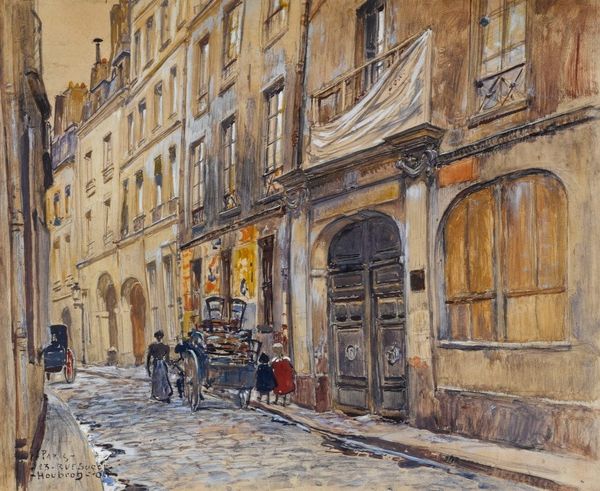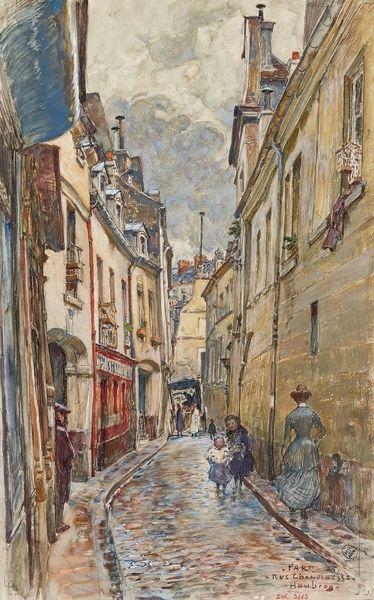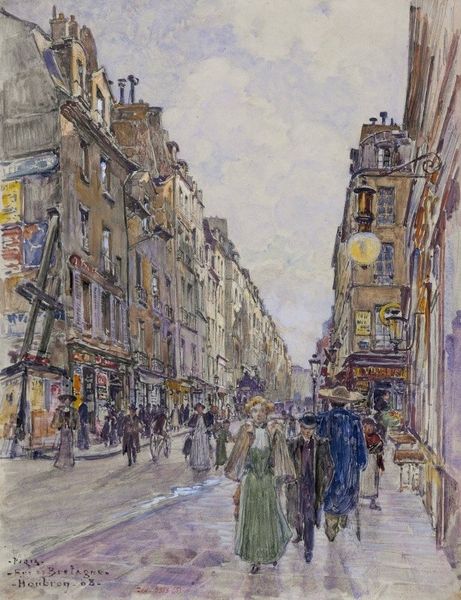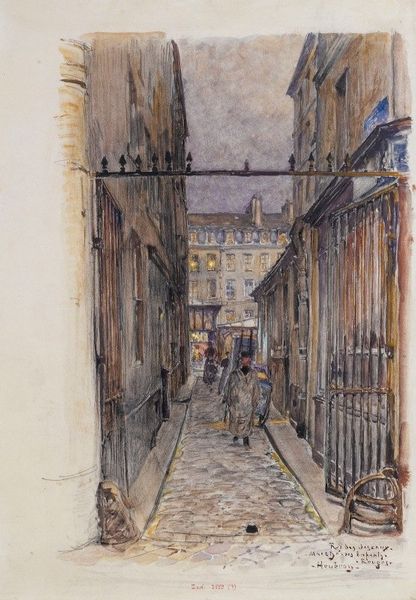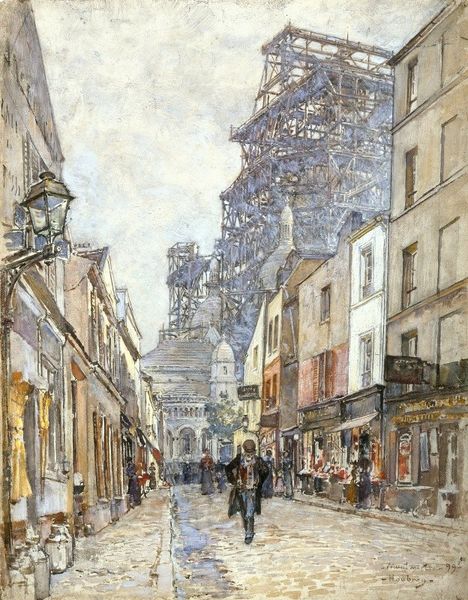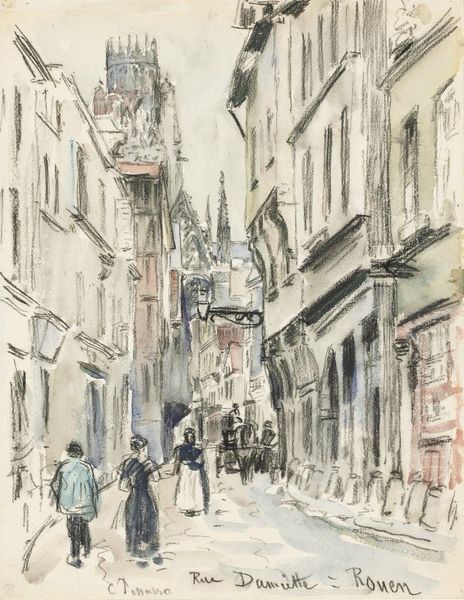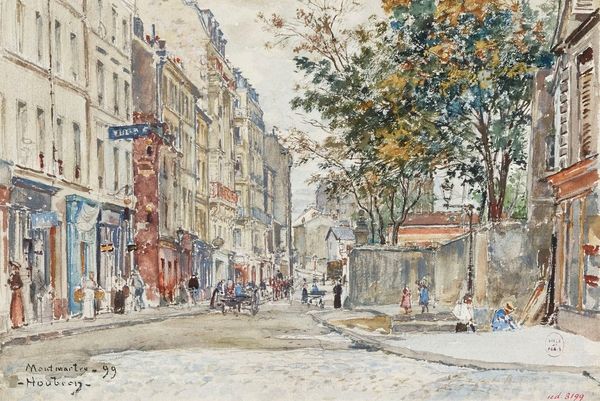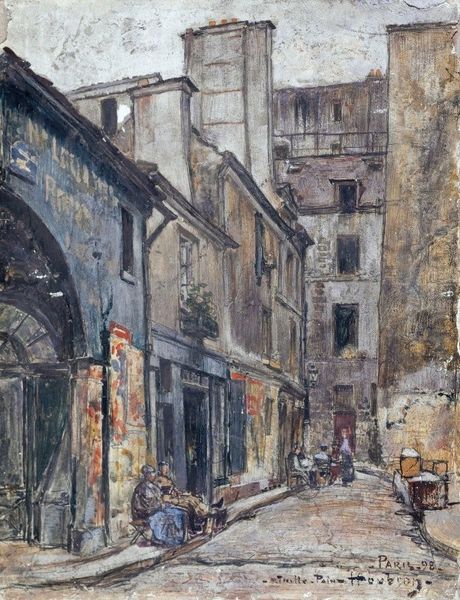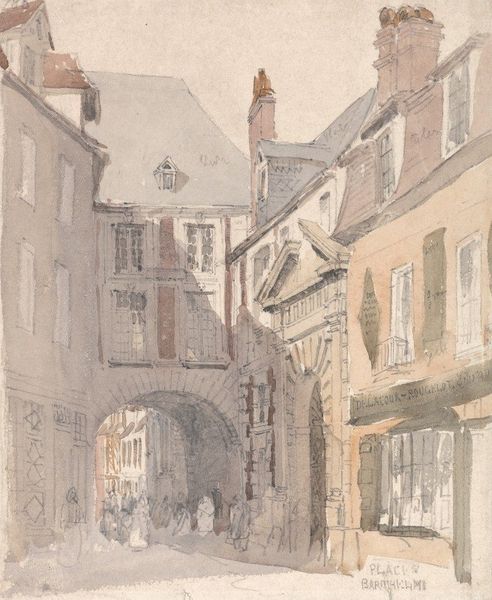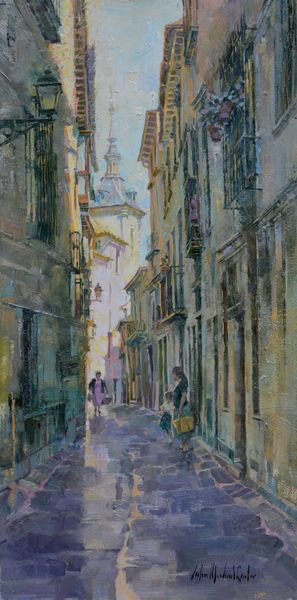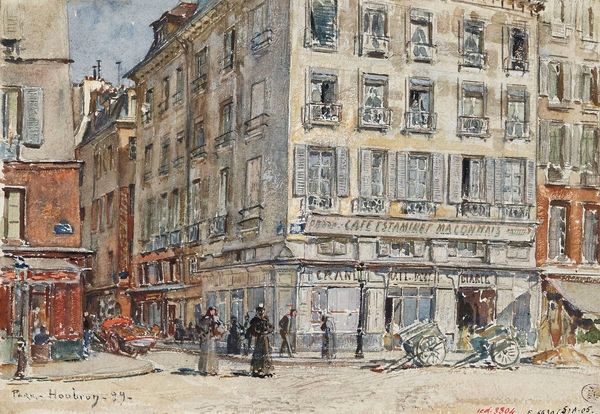
Copyright: Public Domain: Artvee
Curator: What a charming glimpse into the past. This watercolor by Frédéric Houbron, created in 1898, captures "l’Hôtel de Sens, 1 rue du Figuier, en 1898, 4ème arrondissement" in Paris. Editor: My first impression is how the light catches the stonework, lending the building a solemn, almost mythical aura, contrasting with the ordinary street activity. There's something romantic and somber happening here at once. Curator: Precisely! Houbron painted this at a pivotal moment in Parisian history, decades before the World Wars reshaped its landscape. The Hôtel de Sens itself represents layers of political and architectural power, serving as a residence for archbishops during times of intense religious influence. The gargoyles, doorways, even the window placements were designed to project authority. Editor: Absolutely. Those gargoyles! Grotesque, yes, but strategically placed as protectors, warding off evil spirits and announcing the power of the Church even amidst urban change. The artist invites us to ponder on faith and its strong grip in daily life at that time, literally carved into the city’s skin. Curator: And look at how Houbron situates the common folk near the grand entrance; the street cleaners and pedestrians. This reminds us that the Hotel de Sens, while symbolic of clerical dominance, coexisted within a larger society and was fundamentally shaped and affected by urban conditions. It highlights how power structures permeate every layer of the city. Editor: Those figures give it a sense of enduring social hierarchy, like archetypes rather than individuals. The deep shadows around them further push our vision to recognize our primal past; and there are traces of cultural symbols that extend centuries into our past to this day. Curator: This piece really speaks to the social theater played out daily in Paris. How the grand historical narrative and individual experience inevitably cross paths, forming the culture of an era. Editor: For me, seeing those aged stones infused with ethereal light makes me think of old cultural memory and the long timeline of Paris. Curator: Yes, and through it all, the enduring question: Who gets to write, and therefore paint, the historical narrative of a place like Paris? Editor: And how do those stone gargoyles continue watching?
Comments
No comments
Be the first to comment and join the conversation on the ultimate creative platform.
